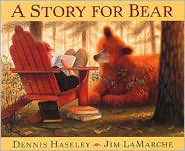

Elfrida Vipont is the author of the classic The Elephant and the Bad Baby. I love this book! It has never 'flopped' with any Kindergarten class I have read it to. It does everything an early childhood book should do. It has rhyme, rhythm and repetition. It has a plot, improbable main characters and it finishes with everyone having tea, as all good children's books should! (Well they often did, when this one was written.) It is easy to plan response activities for (see class mural) and it always makes for good discussion too, about manners and stealing, two things 5 year olds definitely have an opinion on. And it has the added bonus of Raymond Briggs' illustrations.
Other than this book, I knew nothing about Elfrida Vipont, but with what I have just said in mind, I was not surprised to read that she was a teacher and a Quaker.


















































 tina. There is a Stella book for each season. Stella is the older sister and guide for Sam, the younger more timid brother. They have a lovely sibling relationship, unlike Rosemary Wells' Ruby and Max. Sam is very inquisitive and asks lots of questions which Stella endeavours to answer. These humorous stories show the siblings to be playful and trusting and show the environment in a very positive light.
tina. There is a Stella book for each season. Stella is the older sister and guide for Sam, the younger more timid brother. They have a lovely sibling relationship, unlike Rosemary Wells' Ruby and Max. Sam is very inquisitive and asks lots of questions which Stella endeavours to answer. These humorous stories show the siblings to be playful and trusting and show the environment in a very positive light.
